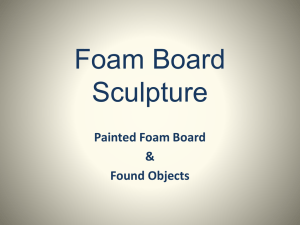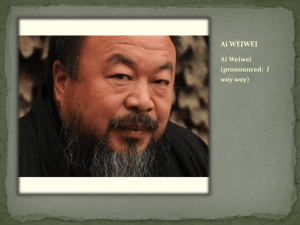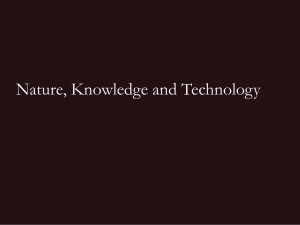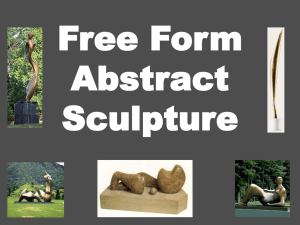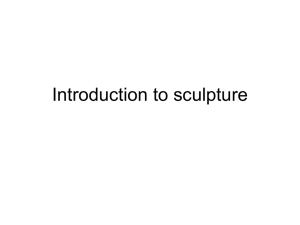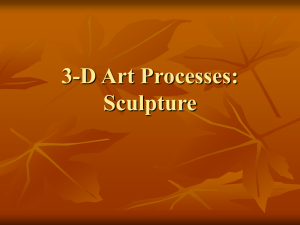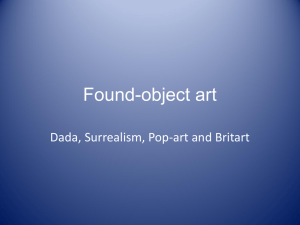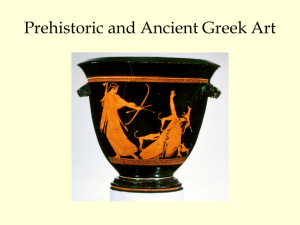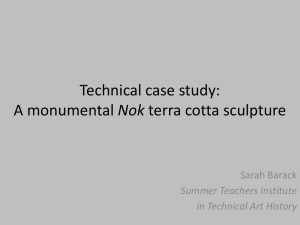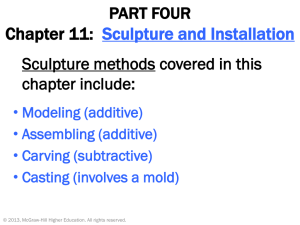sculpture_-_intaglio_sculpture_sheetrock
advertisement
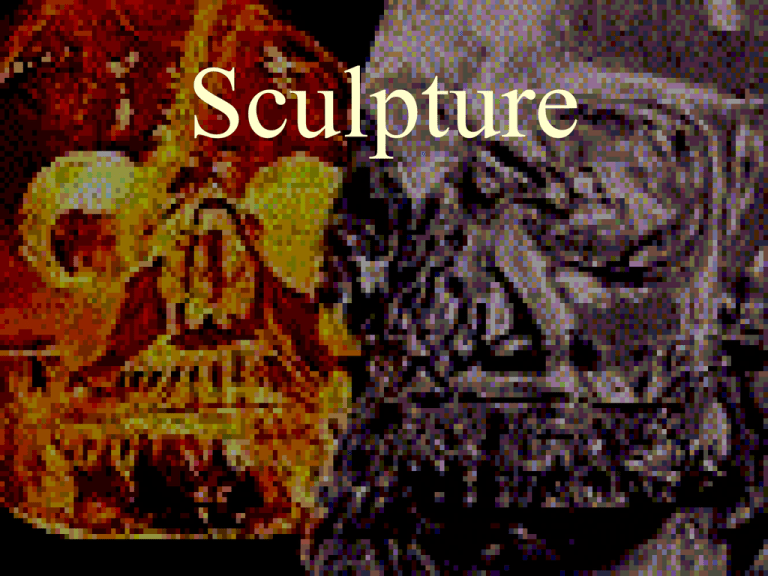
Sculpture What is sculpture ? • Sculpture is the realization of a design in three dimensions. It has volume, or contains height and width in addition to depth. • The sculptural terms for these three “directions” are… – HEIGHT - the vertical plane (up and down) – WIDTH - the horizontal plane (side to side) – DEPTH - the transverse plane (front to back) The main categories of sculpture • All sculpture fits into two broad categories. • Additive Sculpture this is sculpture made from putting pieces together (assembly). • Subtractive Sculpture this is made by removing pieces from a whole (carving). The types of sculpture • In addition to the two broad categories, there are three types of sculpture. • These are Relief, Intaglio and In the Round. • A piece of sculpture will be a specific type and fit into one of the two categories, for example… – A gravestone is a subtractive piece and an intaglio type. In the Round • In the Round sculpture is sculpture that can be seen from all sides. • You can walk around a piece of In the Round sculpture and see it from all angles and different viewpoints. Relief • Relief sculpture is raised up from a flat surface. • Relief sculpture can usually only be seen from one angle, but may appear to have multiple sides. Intaglio • Intaglio is a type of sculpture that is carved down into a flat surface. • Intaglio can only be seen from one direction and is usually wall mounted. Ground (negative space) removed, figure left flat to create a raised surface. Background cut away and edges of figure ramped to create the illusion of depth. Figure incised as lines (neither ground or figure is carved away) but outlined instead... Entire surface carved away, creating the illusion of the figure projecting out from the surface. Overlapping This is also called stacking. By allowing one object to overlap another, the artist creates the illusion of one object being in front of the other. This illusion can be emphasized by the use of “Changes of Level”. Overlapping on its own however, while creating the feeling of objects behind and in front of one another, fails to create any real sense of “depth of field”. Change of level Notice how a simple change of ground level in figure 1 creates the illusion of more depth. All the artist did was the place the mans feet higher in the picture plane than the dogs. He now looks further away. some other examples... Some student work… Intaglio into Relief sculpture • Paper as a medium (paper sculpture)… • Cutting into the flat paper form to create an intaglio area… • Which uses the paper removed from the intaglio cut to create a relief form. More complex forms… • More complex forms begin to fall into the “in the round” type of sculptural form. Small scale… Large scale… Paper methodology • Paper stand-ups… – How many different ways can think of to make the paper stand up and be self supporting? • Paper texture… – How may different things can you do to the surface of the paper to create interesting visual textures? Surface texture… Surface texture – cutting negative and positive forms into the flat sides of the paper can create visual interest and add structural support as well as scuptural principles. Simple 3D paper pop ups…

